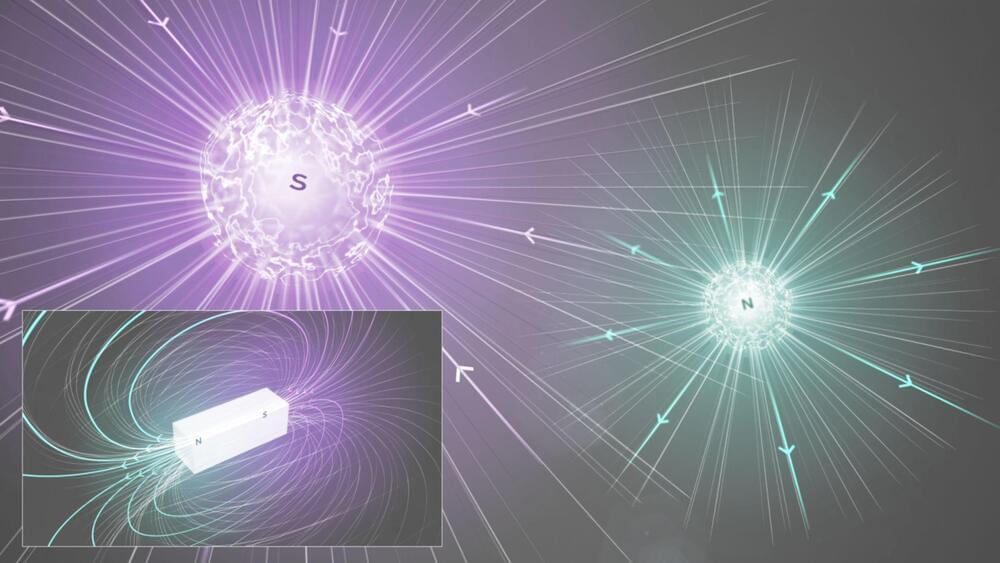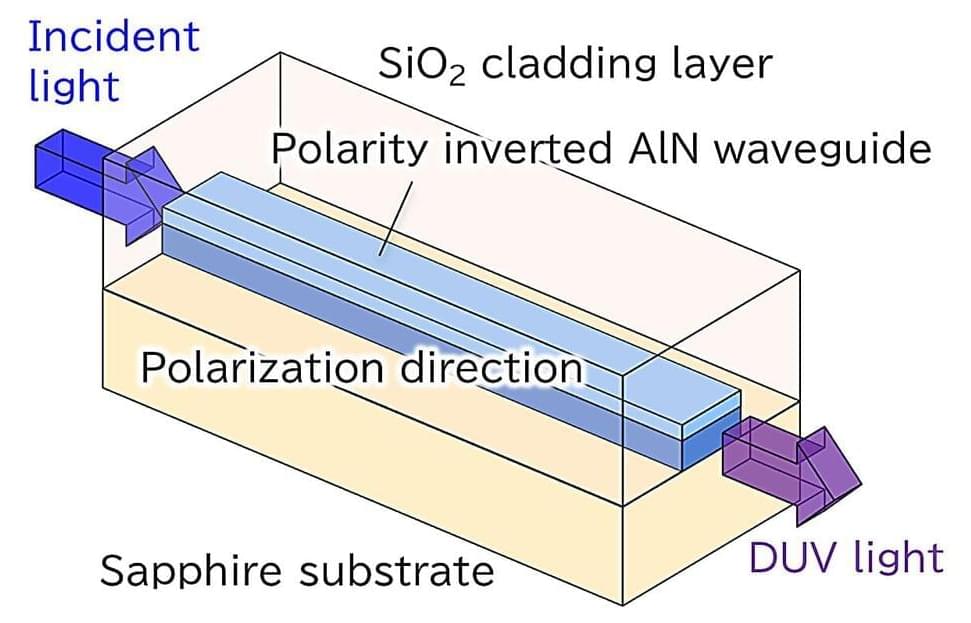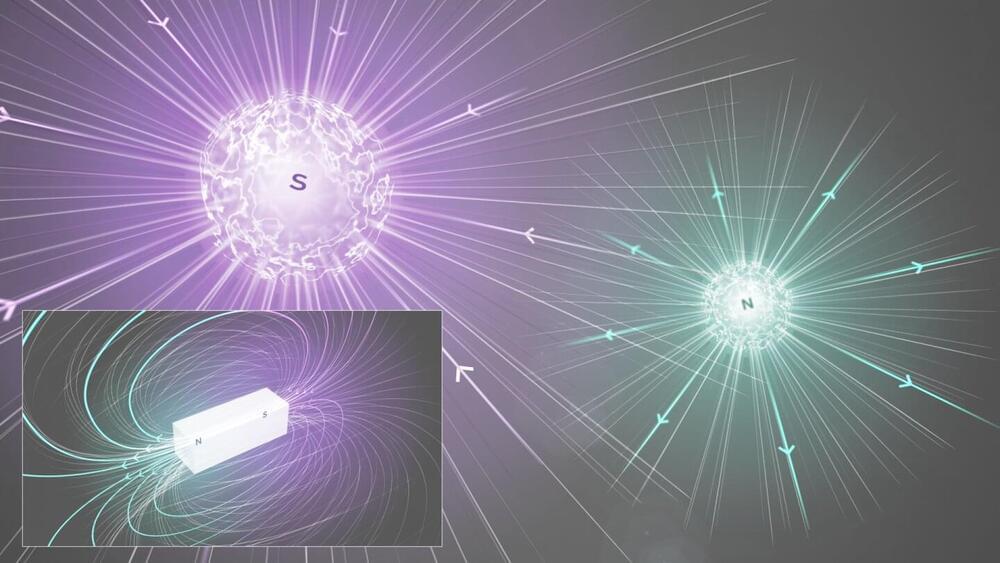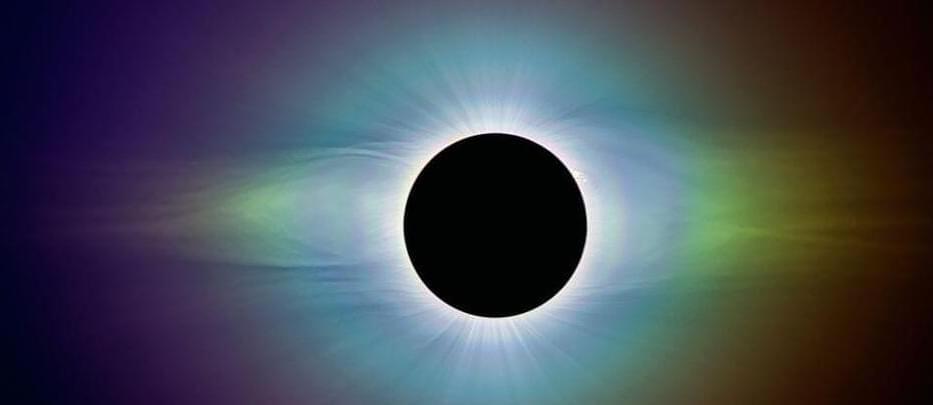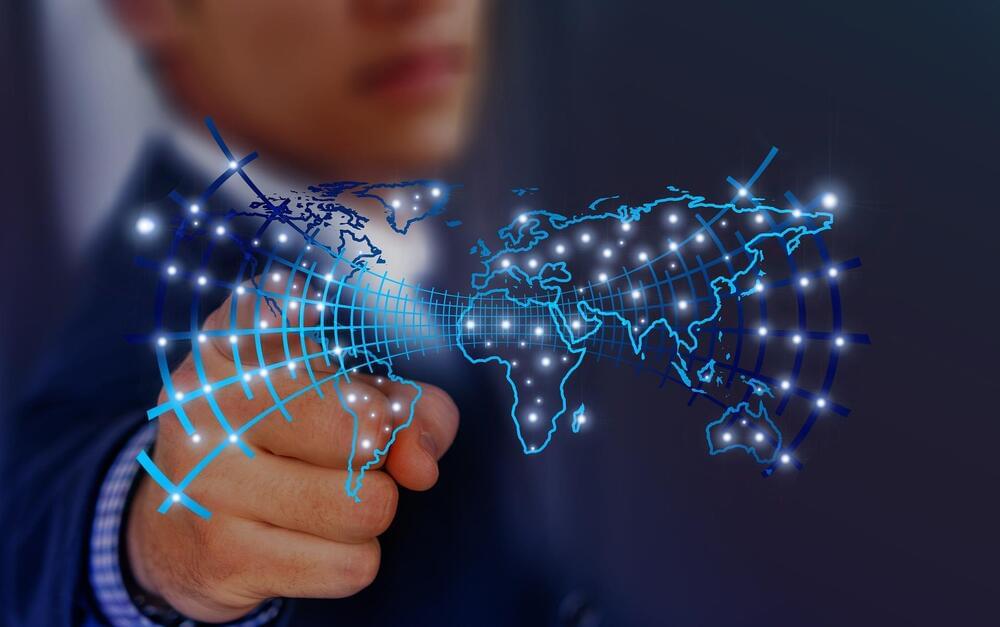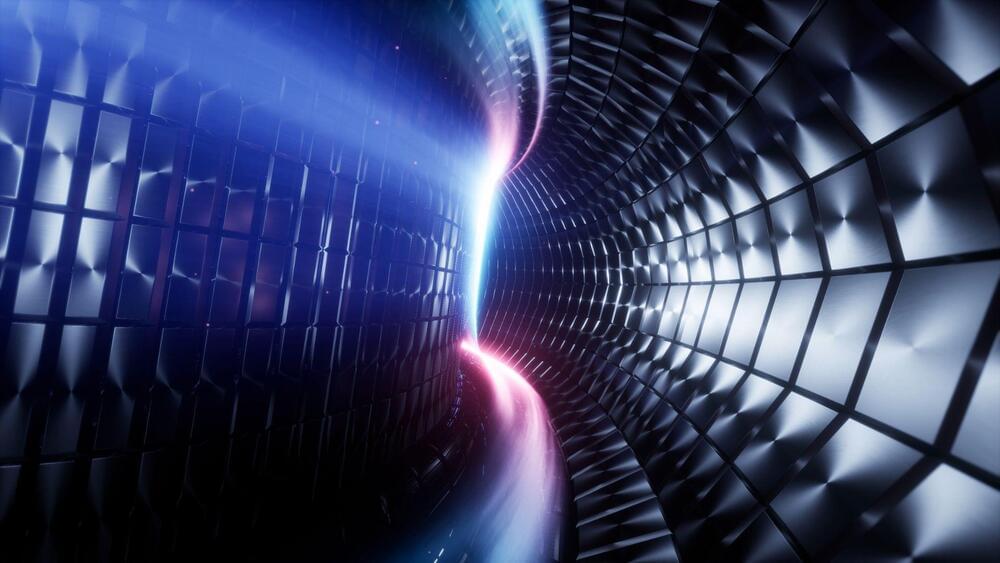Sep 18, 2023
Generating biskyrmions in a rare earth magnet
Posted by Saúl Morales Rodriguéz in categories: nanotechnology, particle physics
Magnetic skyrmions have received much attention as promising, topologically protected quasiparticles with applications in spintronics. Skyrmions are small, swirling topological magnetic excitations with particle-like properties. Nevertheless, the lower stability of magnetic skyrmions only allow them to exist in a narrow temperature range, with low density of the particles, thus implying the need for an external magnetic field, which greatly limits their wider applications.
In a new report published in Science Advances, Yuzhu Song and a team of researchers formed high-density, spontaneous magnetic biskyrmions without a magnetic field in ferrimagnets via the thermal expansion of the lattice.
The team noted a strong connection between the atomic-scale ferrimagnetic structure and nanoscale magnetic domains in a ferrimagnet compound by using neutron powder diffraction and Lorentz transmission electron microscopy measurements.

